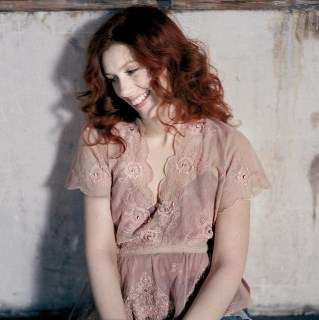|
Back
Baroque Evening at Topkapi Istanbul
Hagia Eirene Museum
06/20/2016 -
Francesco Maria Veracini: Overture No. 6 in G minor
Antonio Vivaldi: La Senna festeggiante, RV 693: Sinfonia in C Major
George Frideric Handel: Arias from Alcina, HWV 34, Rinaldo, HWV 7, and Giulio Cesare in Egitto, HWV 17 – Concerto grosso in B flat Major, opus 3 No. 2, HWV 313 – Ariodante, HWV 33: Overture – Terpsicore, HWV 8b: Chaconne
Patricia Petibon (soprano)
Venice Baroque Orchestra, Andrea Marcon (conductor)

P. Petibon (© Felix Broede/DGG)
The venue for the Venice Baroque Orchestra under Andrea Marcon was Aya Irini’s 4th century church in the outward courtyard of Topkapi Palace, imperial Ottoman palace from 1465 to 1856. The setting was evocative and the acoustics superb. The gentle flight of a couple of pigeons within the basilica, the chirping of birds in the palace gardens and seeing the sunset through the open spaces in the church made the event magical.
The concert opened with Francesco Veracini’s Overture No. 6, elegantly written by the rarely performed composer whose career extended over Italy, the court of Dresden and London. This overture unusually opens with a brisk allegro movement and also ends in an even more spirited allegro. Throughout the concert, all musicians save the cellos, stood as is often the case in early music ensembles. The second instrumental work was the Sinfonia from Vivaldi’s La Senna festeggiante or The Festive River Seine, a work composed for Louis XV and possibly Vivaldi’s most French composition. Marcon and The Venice Baroque Orchestra played with elegance and panache. The tempi in Handel’s Concerto grosso in B flat Major were slightly faster in the Allegro and Vivace movements and slightly slower in the Largo and Moderato movements. This gave the work an Italian feel, especially in the slower movements when it often evoked Venitian composer Marcello. The Overture to Ariodante was brisk and sounded martial.
French soprano Patricia Petibon sang a selection of Handel arias, some from operas she has performed in the past few years: Alcina and Ariodante. The most expressive was “Lascia ch’io pianga” from Rinaldo. Every repetition of the first part of the famous aria from Rinaldo was coloured differently expressing progressively increasing degrees of sorrow. The crescendo culminated in the second part, “Il duol infranga” having such intensity that the final last words “sol per pietà” ended in a feeling of paroxysm that I have never before experienced in this aria. The least satisfying was the aria “Di, mio cor, quanto t’amai!” from Alcina. It was moving in its first slow part thanks to Petibon’s phrasing and the elegant accompaniment by Marcon and his musicians. The second part was unusually weak: Petibon did her best but the diminutive voice is not meant to sing such dramatic music. The attempts at darkening the voice at the repeating of the words “sola” and “oh Dei perchè” were less than beautiful. Rage sounded more like shrill shrieks.
Patricia Petition is an exceptional artist who masters the baroque style. Endowed with a small light voice, she manages to adjust her small instrument to interpret arias meant for much heftier voices, but alas certain things cannot be faked. Cleopatra’s aria “Piangerò la sorte mia” from Giulio Cesare was well suited to Petibon’s voice and she was effective in extending the opening word “piangerò” to rarely heard lengths showing excellent technique and breath control and also stressing the sadness. She could have derived more pathos from more emphasis on key words such as “crudele” and “tiranno”. Greatly appreciated by the audience was Petibon’s last aria, “Torna a vagheggiar” from Alcina, one of Handel’s catchiest. Written for the lyric soprano role of Alcina’s sister Morgana, the aria has been appropriated by many interpreters of the title role. Dressed as a hybrid between a commedia dell’arte character and a magician, Petibon parodied the coloratura style, winking, throwing props at the audience and flirting with the musicians. As it was written for the role of a lyric soprano, the melodious aria may not have been the most appropriate to parody the coloratura soprano voice. Furthermore, the text is more about loyalty than flirting. Possibly the most exquisite singing of the evening was the encore: Vos mépris chaque jour by Lully’s father-in-law Michel Lambert (1610-1696), a sad song about the joy of love’s suffering. It was a delight to hear such a perfect French diction and to hear Petibon singing with sincerity and style rather than dazzling with fireworks.
Patricia Petibon
Venice Baroque Orchestra
Ossama el Naggar
|